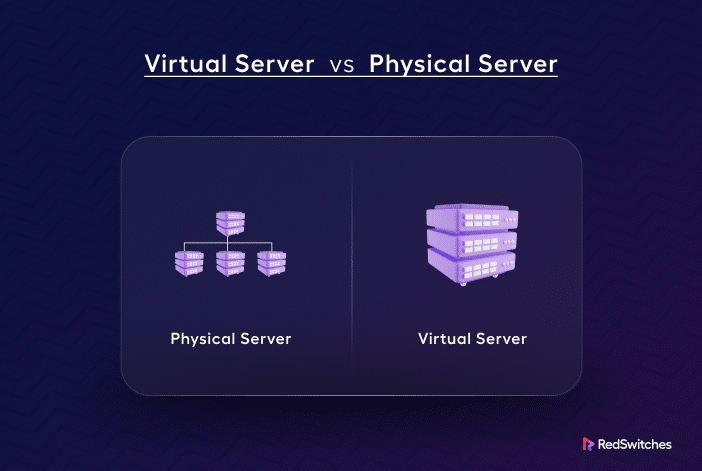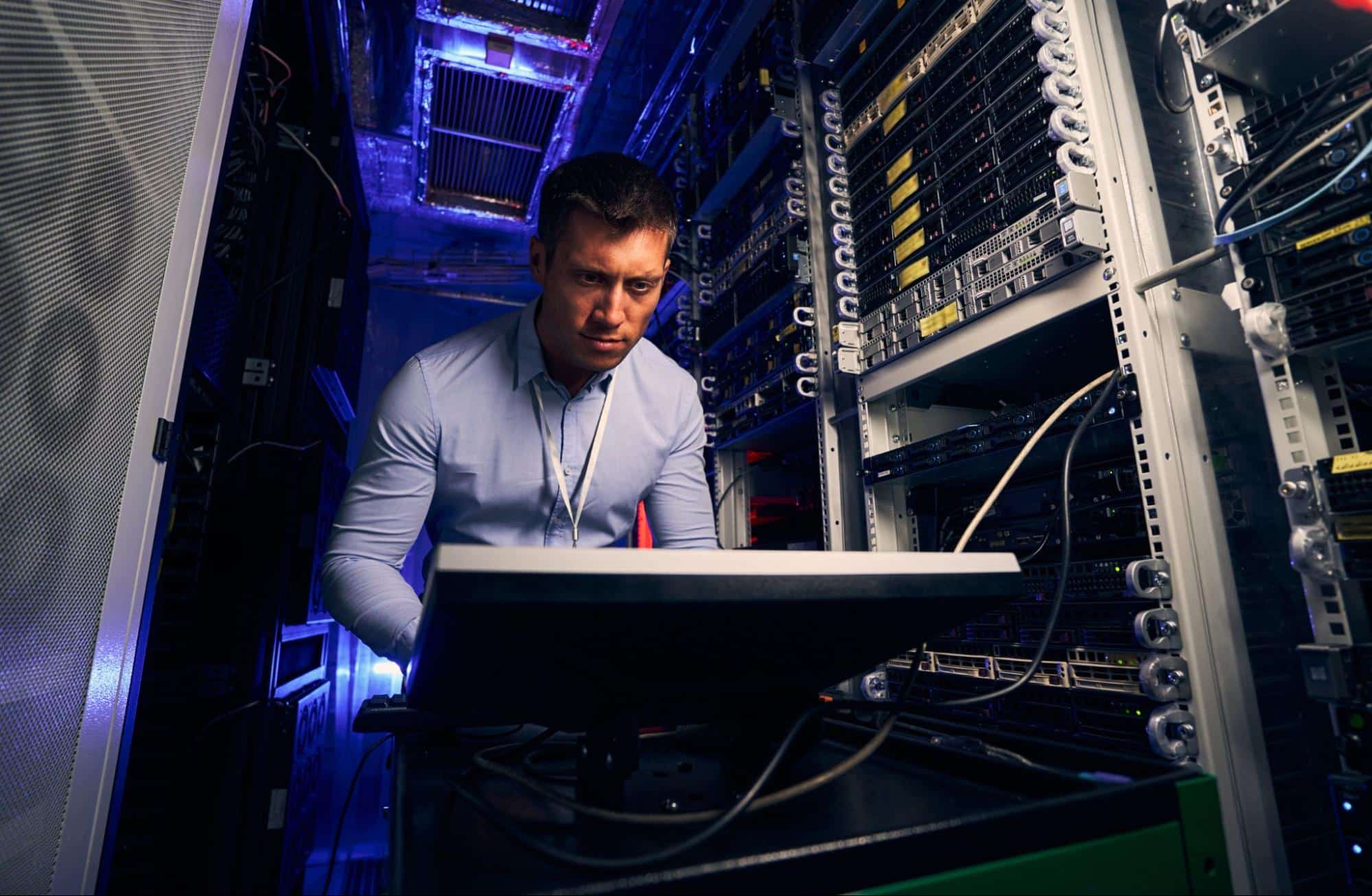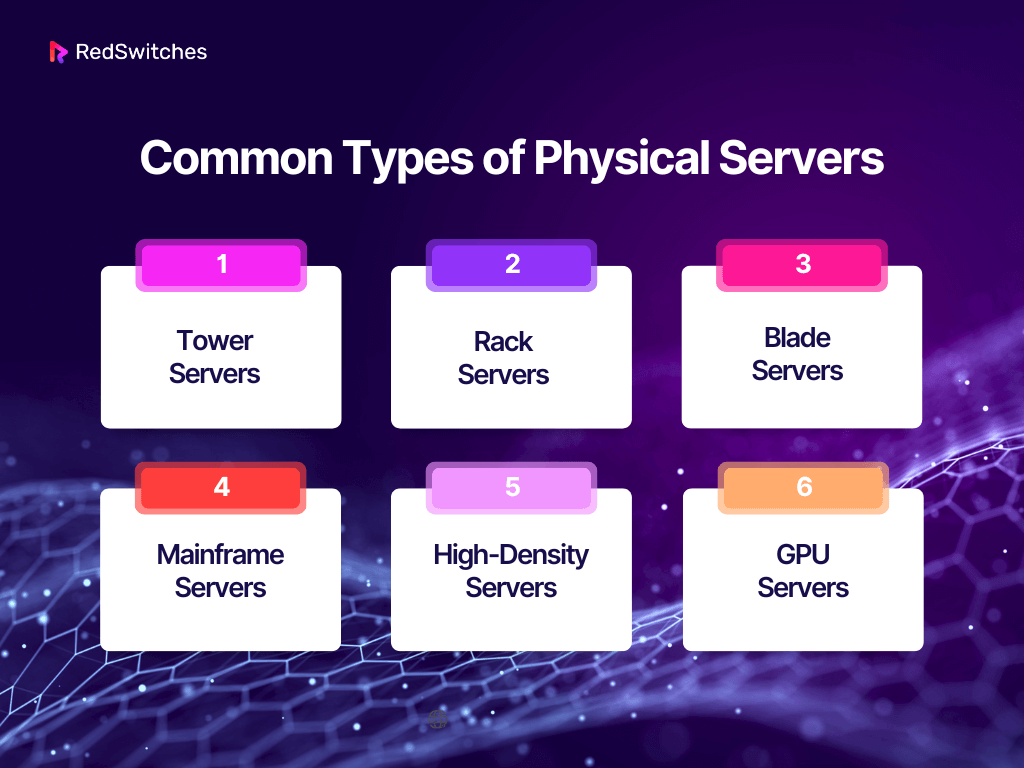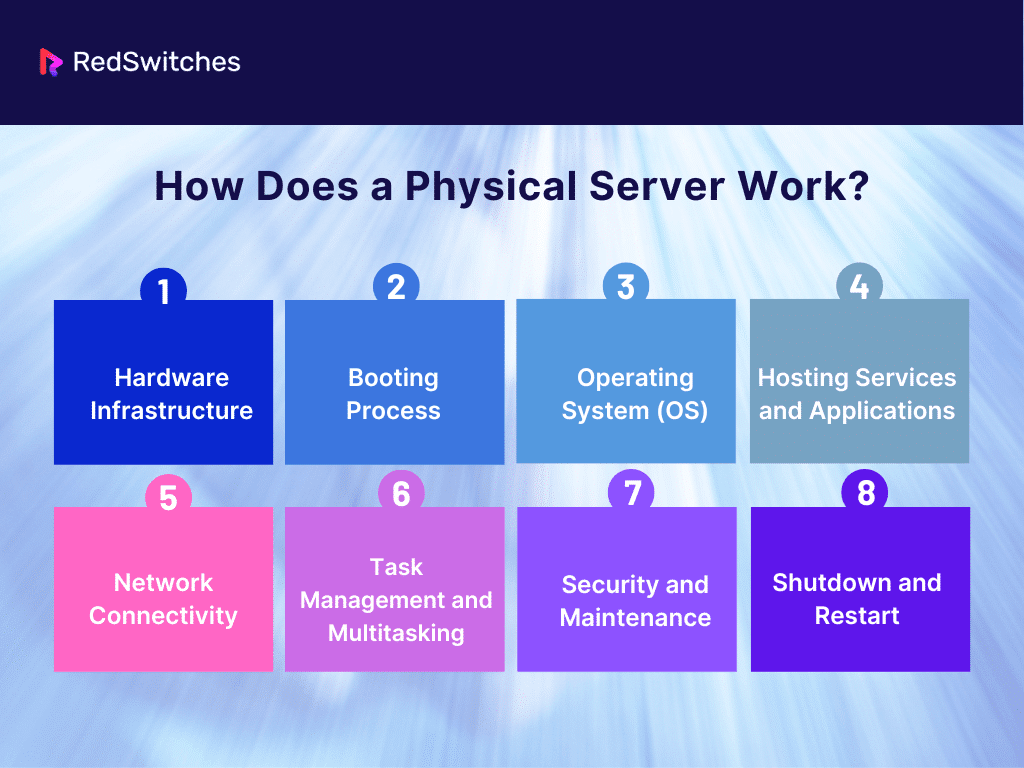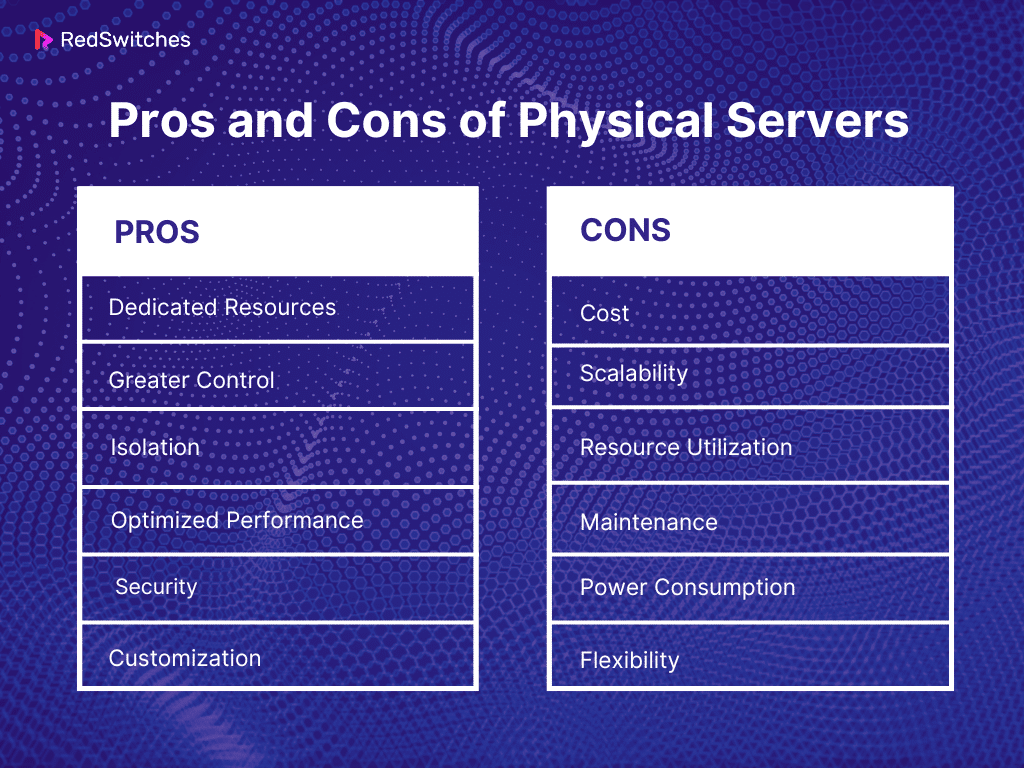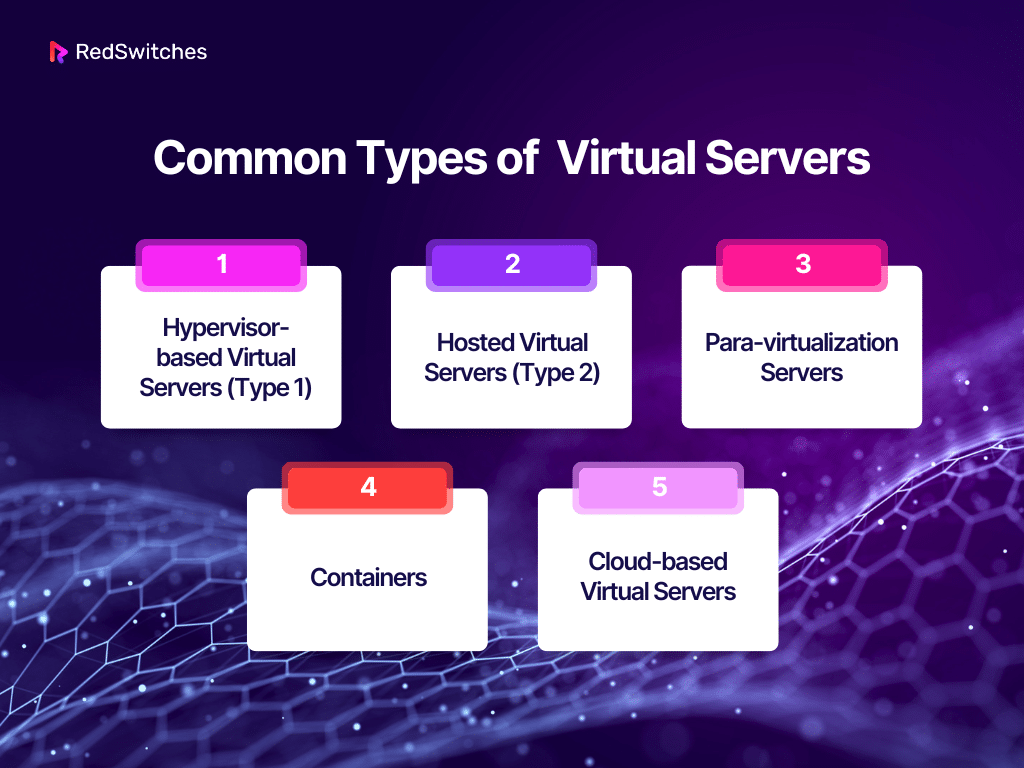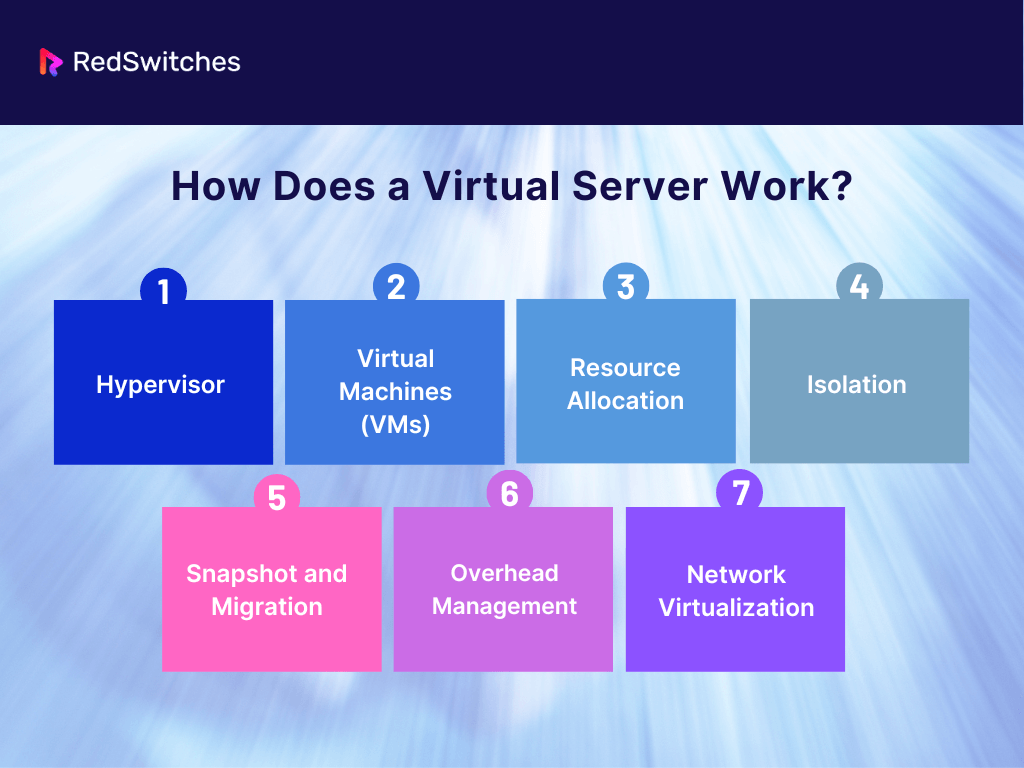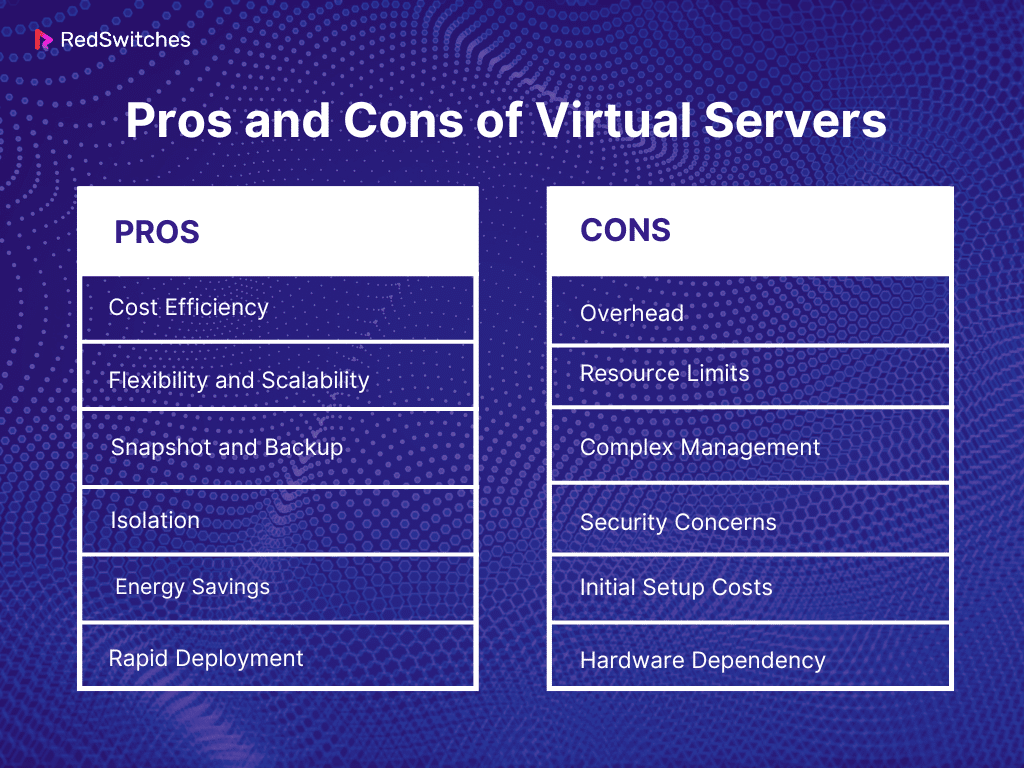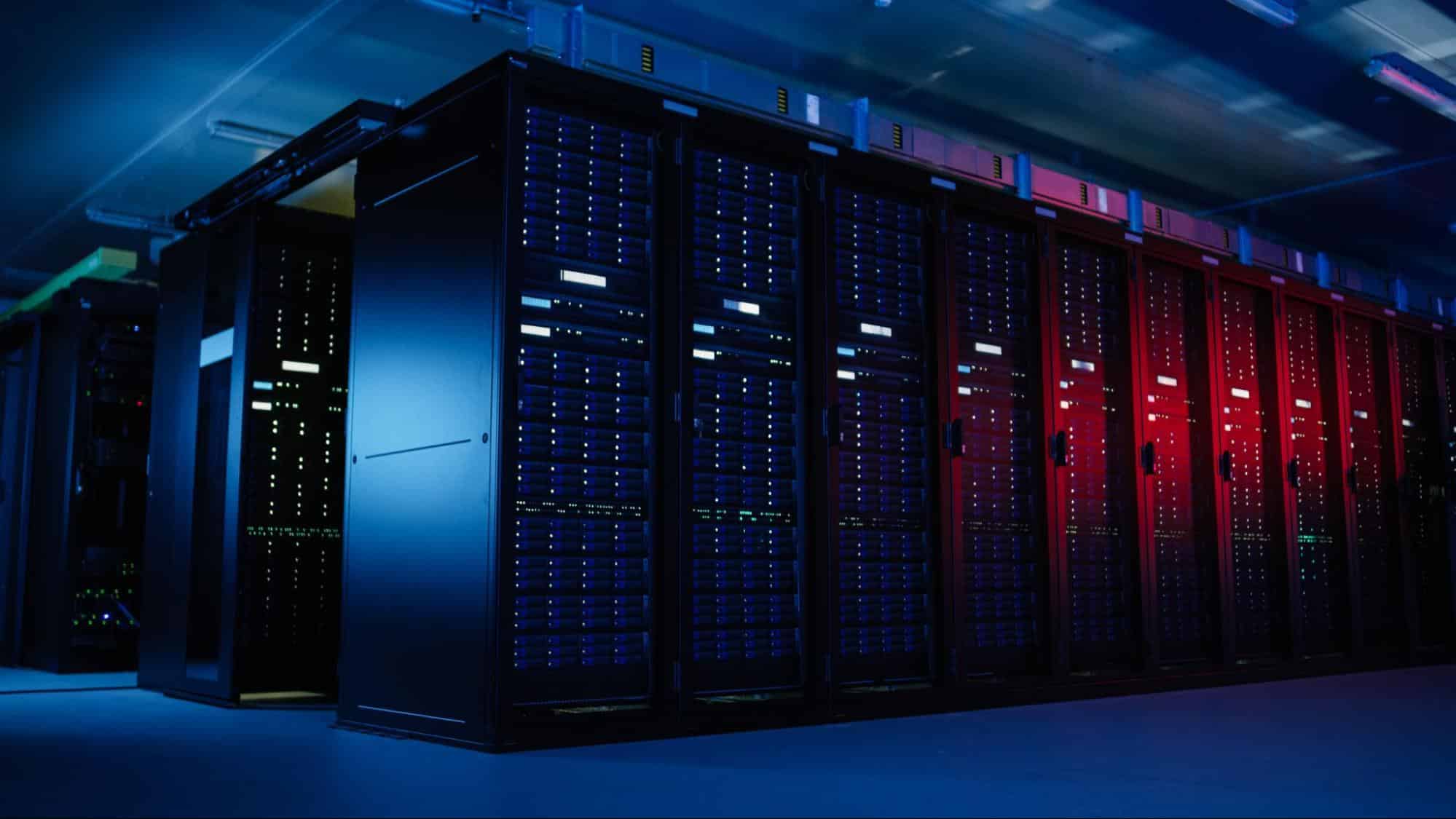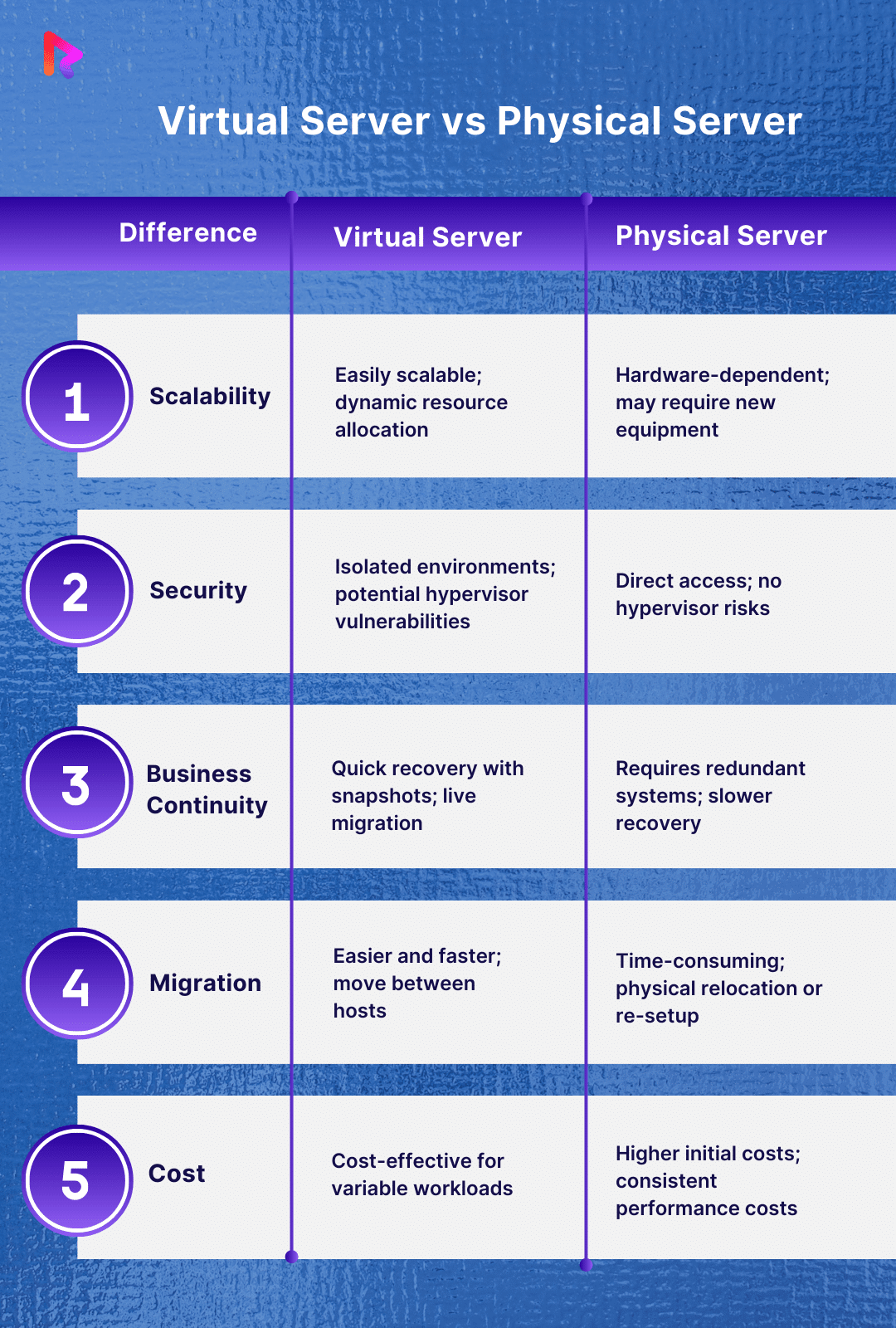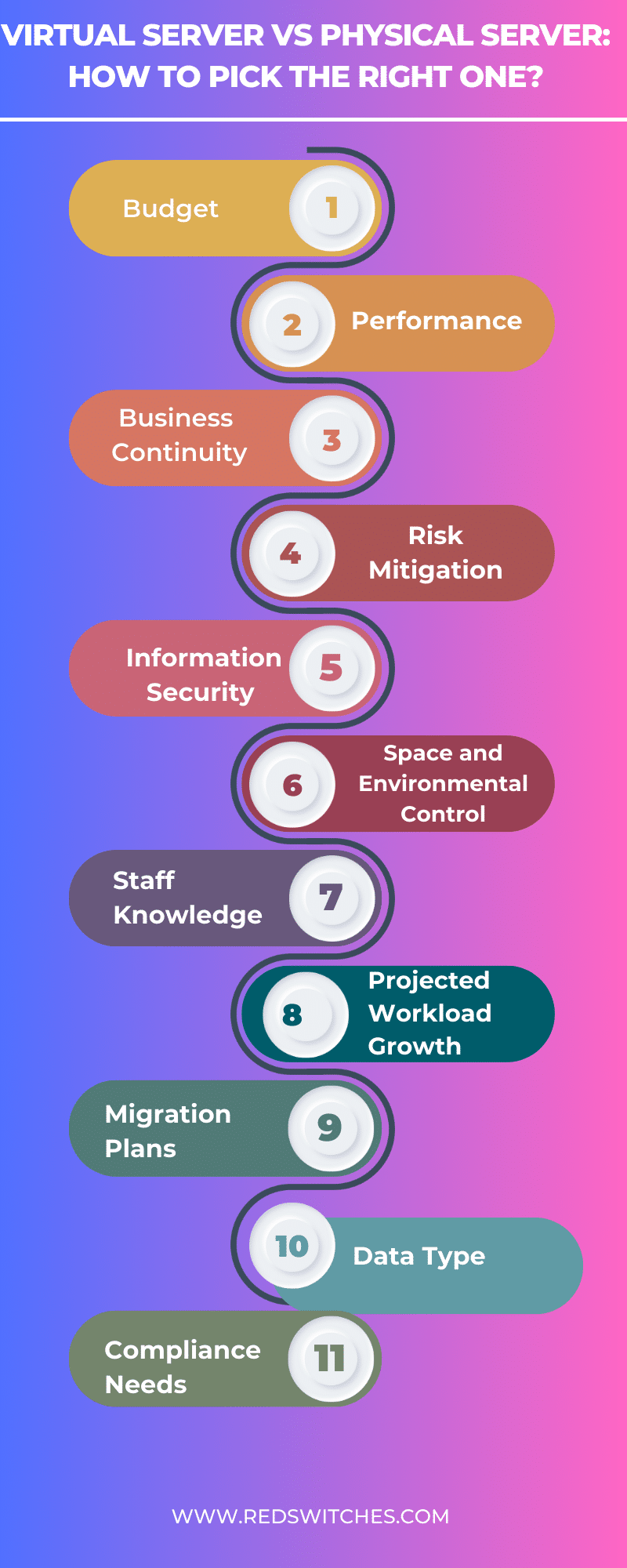Today’s rapidly evolving technological landscape demands organizations to constantly evaluate the most efficient ways to manage and deploy their IT infrastructure. At the forefront of this discussion are two main options: physical server and virtual server.
According to Statista, in 2019, 55.6% of servers throughout the globe were physical only, a reduction from the 57.2% of servers recorded in the year to June 2018. Although the percentage of physical servers might be decreasing, it is essential to understand that while a virtual server may be best for a user, a physical server may be better suited for another.
Credits: Shutterstock
Understanding their differences is crucial in determining the best suited for specific needs. This blog delves into the key difference between physical and virtual servers, offering insights to help guide your decision-making. Let’s begin a detailed discussion on physical server vs virtual server.
Before we compare virtual servers to physical servers, let’s discuss their definitions, working mechanisms, and pros and cons.
Table of Contents
- What is a Physical Server?
- What is a Virtual Server?
- Physical Server vs Virtual Server: The Key Differences
- Physical Server vs Virtual Server: How to Pick The Right One?
- Physical Server vs Virtual Server: Real-Life Examples and Use Cases
- Final Thoughts – Physical vs Virtual Server
- FAQs
What is a Physical Server?
A physical server refers to a standalone computer designed for powerful performance, dependability, and centralized control of network resources. These servers feature specialized hardware parts, including ECC memory, redundant power supplies, and enterprise-grade hard drives, to manage heavy workloads and reduce downtime.
These servers are typically held in data centers, on-premises IT rooms, or other controlled environments. They provide the underlying infrastructure for hosting websites, databases, applications, and other critical IT services. Their dedicated nature means that all the hardware resources, including memory, storage, and CPU, are solely allocated to the tasks and processes running on that particular machine.
Credits: Shutterstock
Common Types of Physical Servers
Different server types are built to handle varying workloads and use cases. These servers cater to different organizational needs. Below is a list of the common types of physical servers used today:
Tower Servers
Unlike traditional desktop PCs, tower servers are a single unit often used by small businesses or for applications with lighter workloads. They’re usually the most cost-effective option and offer effortless maintenance and upgrade. However, due to their bulky build, they might not be the best fit for environments with space constraints.
Rack Servers
Rack servers, designed to be mounted on standardized racks, are widely found in data centers and large enterprises. They are configured to maximize space utilization, with units measured in rack units. These servers provide enhanced scalability than tower servers and have features that enable efficient cooling and power management.
Blade Servers
Blade servers are a type of server architecture that offers a more compact and energy-efficient solution than standard rack-mounted servers. They feature multiple thin, modular electronic circuit boards, known as ‘blades,’ each of which is a server on its own. Each blade includes processors, memory, integrated network controllers, and sometimes storage.
Mainframe Servers
Mainframes date back to the early days of computing. They are powerful servers known for their remarkable performance, reliability, and ability to handle massive data processing tasks. They’re employed by large organizations, especially in sectors like banking and finance, where extensive amounts of transactions need to be processed reliably.
High-Density Servers
High-density servers are a suitable option in environments with substantial computing power demands but limited space. These servers are optimized for performance, packing multiple computing nodes within a single unit. They are often used in high-performance computing (HPC) environments, including scientific simulations or big data analytics.
GPU Servers
GPU servers have gained popularity with the rise of tasks requiring extensive parallel processing, including deep learning and 3D rendering. These servers include several Graphics Processing Units (GPUs) alongside traditional CPUs, allowing them to handle workloads that benefit from the parallel processing capabilities of GPUs.
Do you wish to discover the difference between bare metal server and VM servers? Read our blog, ‘All You Need To Know About Bare-Metal vs VM.’
How Does a Physical Server Work?
Wondering how exactly does a physical server operate? Below is a breakdown of the inner workings of a physical server:
Hardware Infrastructure
At the foundational level, a physical server consists of hardware components identical to a standard desktop computer, albeit more powerful and specialized. These include a CPU (central processing unit), RAM (random access memory), storage drives (HDDs or SSDs), a motherboard, power supplies, and network interfaces. The focus is on durability, reliability, and long-term performance.
Booting Process
When powered on, the server undergoes a booting process. The server’s firmware, including the Basic Input/Output System (BIOS) or Unified Extensible Firmware Interface (UEFI), initiates the system’s hardware components and loads the operating system (OS) from the storage drive into RAM.
Operating System (OS)
The server’s OS is specially curated for server tasks, with popular choices being Linux, Windows Server, or UNIX variants. The OS manages the server’s resources, distributes tasks to the CPU, and handles memory and storage. It is an intermediary between the hardware and the services or applications the server is meant to run.
Hosting Services and Applications
Once the OS is operational, the server can run various services and applications. This could include web hosting, database management, file storage, email hosting, virtualization, or any other specialized tasks the server is configured for.
Network Connectivity
For a server to be useful, it must connect to a network, which enables clients or users to access its services. This is facilitated through its network interfaces, which can connect to local area networks (LANs) or wide area networks (WANs). Servers have static IP addresses. This makes them consistently reachable on the network.
Task Management and Multitasking
Servers often process several requests simultaneously. The OS’s role is to manage these requests, ensuring efficient multitasking. It allocates system resources, like CPU time and memory, to tasks based on priority and needs.
Security and Maintenance
Given their critical roles, servers have enhanced security features. This includes firewalls, intrusion detection systems, and regular software patches and updates. There are routine maintenance tasks, like backups and performance monitoring. This ensures the server operates smoothly and can maintain data integrity.
Shutdown and Restart
Servers must be restarted occasionally for maintenance tasks, software updates, or troubleshooting. The shutdown process ensures all ongoing tasks are completed and data is saved before power is cut off.
Pros and Cons of a Physical Server
Evaluating the pros and cons of a physical server when contemplating between physical server vs virtual server can offer great insight into whether a physical server is a suitable option for you or vice versa.
Pros
Below are the top pros of physical servers:
- Dedicated Resources: Physical servers provide dedicated computational resources, ensuring consistent performance without the interference of other virtual machines.
- Greater Control: Organizations have complete control over the server hardware, allowing for custom configurations and immediate physical access if needed.
- Isolation: Since there are no other tenants or virtual machines on a physical server, there’s a reduced risk of ‘noisy neighbors’ affecting your operations.
- Optimized Performance: Without the overhead of virtualization layers, physical servers can deliver slightly better raw performance for specific applications.
- Security: Sometimes, the absence of virtualization can provide a more straightforward security model. There’s also no risk associated with hypervisor vulnerabilities.
- Customization: Hardware components can be handpicked and tailored to specific needs, ensuring optimal performance for specific applications or workloads.
Cons
Below are the cons of physical servers:
- Cost: Physical servers often incur higher upfront expenses than virtualized environments. Some common costs include hardware, space, and power.
- Scalability: Scaling up a physical server often requires manual hardware upgrades. This may be more time-consuming and costly than provisioning new virtual machines.
- Resource Utilization: Unlike virtualized environments where resources can be dynamically allocated, physical servers may underutilize them, leading to inefficiencies.
- Maintenance: Physical servers require more hands-on maintenance. Hardware failures can lead to downtime until the faulty component is repaired or replaced.
- Power Consumption: Physical servers can consume more power and heat than virtualized servers running equivalent workloads.
- Flexibility: Implementing changes, backups, or migrations can be more cumbersome with physical servers than the agility virtual environments offer.
Are you interested in learning about the four different server types? Read our informative blog, ‘Different Types of Servers: Understanding Server Types for Enhanced Functionality.’
What is a Virtual Server?
Credits: Shutterstock
A virtual server, a virtual machine (VM), is a software-based computing model that takes the form of a physical computer. It operates within a host system stimulated by virtualization software or hypervisors like Microsoft Hyper-V, VMware, or Oracle VirtualBox.
Unlike a physical server, which dedicates its complete hardware to its processes, a virtual server shares its host’s resources like memory, CPU, and storage. At the same time, other VMs run on the same physical machine.
This architecture enables multiple virtual servers to operate simultaneously on a single physical server, each boosting its own applications, operating system, and isolated environments. The main benefit of virtual servers is their ability to deliver flexibility, scalability, and resource optimization, as they can be easily created, modified, migrated, or deleted based on evolving needs.
Common Types of Virtual Servers
Below are some of the most common types of virtual servers:
Hypervisor-based Virtual Servers (Type 1)
- Bare-Metal Hypervisors: These run directly on the host’s hardware to control the hardware and manage guest operating systems. Examples include:
- VMware vSphere/ESXi: Widely used in enterprises, offering advanced features and robust performance.
- Microsoft Hyper-V: Integrated into Windows Server editions, it’s a popular choice for Windows-centric organizations.
- Oracle VM Server for x86: A free-to-use virtualization solution that supports a range of guest OSes.
- Xen: An open-source hypervisor many cloud providers use, including Amazon Web Services (for its Amazon EC2 service).
Hosted Virtual Servers (Type 2)
- Hosted Hypervisors: These run within a conventional operating system environment. Examples include:
- VMware Workstation: Suitable for desktop environments, it allows users to run multiple OSes on a single workstation.
- Oracle VirtualBox: A free and open-source solution, ideal for desktop users wanting to run multiple OSes.
- Parallels Desktop: Popular among Mac users, it allows running Windows, Linux, or other OSes alongside macOS.
Para-virtualization Servers
Instead of emulating complete hardware, para-virtualization involves a software interface closely resembling the underlying hardware but requires OSes to be modified for this environment. The Xen hypervisor supports para-virtualization.
Containers
Containers virtualize the OS instead of the underlying physical hardware. This allows multiple workloads to share a single OS instance. Examples include:
- Docker: A popular container-based virtualization platform known for its efficiency and scalability.
- LXC: Linux Containers provide a lightweight environment for running multiple isolated Linux systems (containers) on a single Linux control host.
Cloud-based Virtual Servers
These are virtual machines offered as a service by cloud service providers. Examples include:
- Amazon EC2 Instances: Offered by Amazon Web Services, they provide resizable compute capacity in the cloud.
- Azure Virtual Machines: Part of Microsoft’s Azure platform – users can deploy various computing solutions.
How Does a Virtual Server Work?
Below is a breakdown of how a virtual server works:
Hypervisor
The hypervisor is at the heart of virtualization. This is a software layer (or, in some cases, an amalgamation of hardware and software) between the server’s hardware and its operating system. The hypervisor creates, manages, and runs virtual machines (VMs).
Virtual Machines (VMs)
Each VM is an independent environment with virtual hardware resources (CPU, RAM, storage, etc.) allocated from the physical server’s resources. It can run its own operating system independently of the physical server’s underlying ‘host’ operating system.
Resource Allocation
The hypervisor dynamically allocates the physical server’s resources to the VMs based on configuration and need. For example, a physical server with 32 GB of RAM might host four VMs, each with 8 GB of allocated virtual RAM.
Isolation
One of the top benefits of virtual servers is their isolation. The actions or failures within one VM don’t impact others. This is crucial for maintaining a stable environment, especially when hosting different applications or services on separate VMs.
Snapshot and Migration
Virtual servers can be ‘snapshotted’ to capture their current state, allowing quick backups, testing, or system rollbacks. VMs can be migrated between physical servers with minimal downtime, offering flexibility and ease of management.
Overhead Management
While the hypervisor introduces some level of overhead, advancements in virtualization technology and hardware acceleration features have significantly reduced this impact. This empowers VMs to achieve near-native performance.
Network Virtualization
Virtual servers can also have virtual network interfaces, switches, and routers. This allows for complex network configurations and connections within and between VMs without physical networking hardware.
Pros and Cons of a Virtual Server
Evaluating the pros and cons of a virtual server when deciding between a virtual and physical server can offer valuable insight into whether a virtual server is a good option for you.
Pros
Below are the pros of a virtual server:
- Cost Efficiency: Virtual servers enable several virtual machines to run on a single physical server. This boosts hardware utilization and reduces capital and operational expenses.
- Flexibility and Scalability: Virtual servers can be easily scaled up or down based on the requirement. This enables quick deployment and modifications.
- Snapshot and Backup: Virtualization platforms allow for immediate snapshots of virtual machines, making backup and recovery processes more straightforward and efficient.
- Isolation: Each virtual server operates independently. So, if one virtual machine crashes or encounters issues, it doesn’t affect the others.
- Energy Savings: Organizations can reduce power and cooling costs by consolidating multiple virtual machines on fewer physical servers.
- Rapid Deployment: New virtual servers can be cloned or provisioned rapidly from templates, drastically reducing the time it takes to deploy new resources compared to physical servers.
Cons
Below are the cons of a virtual server:
- Overhead: Running multiple VMs on one physical server introduces overhead due to the virtualization layer, affecting performance in high-demand scenarios.
- Resource Limits: While virtual servers share resources with the physical server, there’s a limit to how much they can use, potentially leading to resource contention.
- Complex Management: Managing virtual environments can become difficult, especially as the amount of virtual machines increases. This may require specialized management tools and expertise.
- Security Concerns: Virtual servers can bring new security vulnerabilities. If a hypervisor is compromised, all virtual machines on that host may be at risk.
- Initial Setup Costs: While virtual servers can be more cost-effective long-term, the initial investment in virtualization technology and licensing may be higher.
- Hardware Dependency: If the underlying physical server fails and there’s no redundancy in place (like a failover or clustered setup), all the virtual servers hosted on that machine will be impacted.
Also Read: Does Your Business Need a Cloud Computing Server?
Now that we have discussed the definitions of a virtual server and physical server, along with their working mechanisms and pros and cons, let’s delve into the difference between physical server and virtual server to help you choose the best option.
Physical server vs Virtual server: The Key Differences
Credits: Shutterstock
Below is a comparison of the five key differences between a physical server vs virtual server:
Scalability
Below is a comparison of the difference between a physical server vs virtual server in terms of scalability:
Virtual Server
One of the standout benefits of virtual servers is their inherent scalability. Organizations can quickly adjust resources in a virtualized environment, making it easier to cater to fluctuating workloads. Need to deploy a new server? It’s often as simple as replicating a virtual machine. Adjusting resources such as memory or storage can be achieved dynamically, often without significant downtime.
Physical Server
Physical servers often present more hurdles when it comes to scaling. Expansion typically necessitates the procurement of new hardware, followed by its installation and configuration – a process that can be both time-consuming and capital-intensive. And while specific server components, like RAM or hard drives, can be upgraded, there’s an upper limit to how much one can modify an individual server.
Security
Below is a comparison of the difference between a physical server vs virtual server in terms of security:
Virtual Server
Virtual servers offer a unique proposition regarding security. Since each virtual machine operates in an isolated environment, breaches in one VM don’t inherently threaten others on the same host. This segmentation can be a boon when containing security threats. The underlying layer that facilitates virtualization – the hypervisor – adds a facet that requires stringent security measures.
Do you want an in-depth understanding of server virtualization? Read our blog, ‘Understanding Server Virtualization: The Basics Explained.’
Physical Server
There’s no hypervisor with physical servers, eliminating one potential attack vector. Since everything operates on a singular system, a breach can have sweeping implications for all applications and data on that server. The absence of virtualized layers might simplify security protocols, but the stakes of a single breach can be considerably higher.
Business Continuity
Below is a comparison of the difference between a physical server vs virtual server in terms of business continuity:
Virtual Server
When it comes to ensuring uninterrupted business operations, virtual servers offer several compelling tools. Technologies like snapshots capture the state of a virtual machine, allowing administrators to revert to a previous state swiftly if something goes awry. Features like live migration can transfer VMs between host servers without significant downtime, proving invaluable during maintenance or unforeseen hardware issues.
Physical Server
Physical servers pose more challenges in terms of business continuity. In the event of hardware malfunctions, recovery can be a protracted process, necessitating comprehensive backup and redundancy strategies. While there are tools designed to bolster the continuity of physical servers, they often don’t provide the agility and swift recovery times intrinsic to virtualized solutions.
Migration
Below is a comparison of the difference between a physical server vs virtual server in terms of migration:
Virtual Server
Migration is an area where virtual servers shine. They offer unparalleled flexibility when it comes to moving applications or data. Whether between host machines in a data center or transitioning to a cloud environment, the encapsulated nature of virtual machines ensures that migrations are quick, with minimal downtime.
Physical Server
Migration involving physical servers is invariably more complex. Moving applications or data might involve reconfigurations, hardware changes, or even physical relocation of servers. These processes can be labor-intensive, prone to errors, and often result in extended downtime.
Cost
Below is a comparison of the difference between a physical server vs virtual server in terms of cost:
Virtual Server
From a cost perspective, virtual servers can provide significant savings in the long run. Multiple virtual machines can operate on a single physical server, leading to efficient resource utilization and reduced hardware expenditures. Additionally, energy costs are often lower as fewer physical machines mean reduced power consumption and cooling requirements.
Physical Server
Physical servers can be costly. Each server represents a distinct hardware investment, and as your infrastructure grows, so do these costs. The running costs can add up, with each server demanding its share of power, maintenance, and cooling. These servers can represent a substantial operational expense, especially if resources aren’t fully utilized.
Physical server vs Virtual server Difference Comparision
Also Read: Comparing A Virtual And Bare-Metal Server.
Physical server vs Virtual server: How to Pick The Right One?
Both virtual and physical servers have advantages and constraints, making it difficult to decide which is the perfect fit for your organization. Considering the following factors when contemplating between physical server vs virtual server can help simplify the decision-making process.
Budget
Physical servers demand an upfront capital expenditure for the hardware. This can be expensive to maintain and replace. Virtual servers generally have lower initial expenses and offer flexible pricing models – especially if you’re leveraging cloud providers. You can scale resources as needed, ensuring you only pay for what you use.
Performance
Physical servers offer dedicated resources, often fostering superior performance for resource-intensive tasks. Virtual servers, though efficient, may experience some overhead because of the hypervisor layer, but technology advancements have made this increasingly negligible.
Business Continuity
Virtual servers shine when it comes to business continuity. They can quickly be replicated, backed up, and moved, ensuring minimal downtime. Physical servers demand extensive effort and time for data backup and disaster recovery.
Risk Mitigation
Virtualization allows for easy replication of virtual machines. Virtual servers can be migrated to different host machines in case of hardware failures. This lowers the risk of prolonged downtimes.
Information Security
Both types of servers need powerful security measures. Virtual servers offer snapshot capabilities, allowing you to revert to a previous state if infected by malware. The hypervisor itself could be a potential vulnerability point.
Space and Environmental Control
Physical servers demand considerable space and proper cooling systems. Virtual servers, especially cloud-based ones, free you from these concerns, as third-party providers manage the infrastructure.
Staff Knowledge
Maintaining physical servers requires knowledge of hardware components and their potential issues. Virtual servers require expertise in virtualization technology. Ensure your IT team is equipped with the necessary skills or be prepared to train them.
Projected Growth in Workload
Anticipating future growth can guide your decision. Virtual servers are scalable, enabling you to add more VMs as your workload increases swiftly. Physical servers, while powerful, may require new hardware purchases to accommodate growth, leading to increased costs and potential downtime.
Migration Plans
If you plan on frequent migrations, virtual servers are preferable. Virtual environments allow for easier migrations between host machines or cloud environments. Physical migrations can be more labor-intensive and time-consuming.
Data Type
Consider the nature of your data. A physical server’s dedicated resources may offer benefits if you handle data that requires intense computational power. Virtual servers can be apt for general data processing or multiple smaller applications.
Compliance Needs
Specific industries have strict compliance regulations regarding data storage and processing. Sometimes, dedicated physical servers, isolated from external threats, might be mandated. Virtual servers can meet many compliance standards with the proper security measures.
Are you contemplating between cloud computing vs physical server? Read our comprehensive blog: ‘Cloud Computing vs. Physical Server: Choosing the Right Solution for Your Workload and Budget.’
Physical server vs Virtual server: Real-Life Examples and Use Cases
Looking at real-life scenarios is often helpful in making an informed decision between a physical server vs virtual server. We can better understand the contexts where one might be favored over the other by analyzing specific examples and use cases. Below are some examples demonstrating the strengths and limitations of both physical server vs virtual server:
Web Hosting for Small Businesses
Credits: Shutterstock
Virtual Server
A local bakery wants to establish an online presence with a website showcasing its products. Given the limited traffic expected, a virtual server (often provided as a VPS or Virtual Private Server by hosting companies) is a cost-effective and scalable solution. Resources can be adjusted accordingly as the bakery gains popularity and the website traffic grows.
Physical Server
A well-established e-commerce company with an extensive product catalog and high traffic might opt for a dedicated physical server. This ensures consistent performance and a more predictable environment, crucial for customer experience and sales.
Development and Testing Environments
Virtual Server
A software development company works on multiple projects simultaneously. Each project requires separate environments for development, testing, and staging. Using virtual servers, they can quickly spin up these isolated environments without needing vast amounts of physical hardware.
Physical Server
For a critical application requiring hardware-specific testing or one that demands the highest performance levels, a dedicated physical server could be chosen to ensure accuracy and consistent results.
Data Processing and Analytics
Virtual Server
A start-up is venturing into data analytics but has unpredictable and varying workloads. They start with a virtual server, which allows them to scale up or down based on demand, ensuring they pay only for the resources they use.
Physical Server
A financial institution running complex simulations and analytics that are resource-intensive might lean towards a dedicated physical server. The consistent performance and dedicated resources ensure tasks are completed efficiently without potential interference from other workloads.
Disaster Recovery
Virtual Server
A medium-sized enterprise wants a disaster recovery solution without investing heavily in redundant physical infrastructure. Virtual servers offer a solution. By taking regular snapshots of their virtual machines, they can quickly restore operations in case of a disaster.
Physical Server
A large corporation with a more substantial budget and needs a highly customized disaster recovery solution might invest in duplicate physical servers in a separate location. This directly mirrors their primary environment.
Gaming Servers
Virtual Server
An indie game developer releases a multiplayer game and needs server infrastructure to support it. Initially, they utilize virtual servers, adjusting resources as the player base grows.
Physical Server
A major gaming company launching a highly anticipated online game might opt for dedicated physical servers. This ensures the best gaming experience for their vast player base, minimizing lag and maximizing uptime.
Final Thoughts – Physical vs Virtual Server
Determining which server to choose between a physical server and virtual server depends on your organization’s specific requirements, the scale of operations, budget limitations, and future scalability goals. While virtual servers deliver flexibility, cost efficiency, and ease of management, physical servers remain a powerful choice for organizations that demand dedicated resources and optimal performance.
If you’re contemplating between a physical server vs virtual server, consider contacting RedSwitches. Our expertise and diverse range of hosting solutions ensure that you find a server environment tailored to your needs, ensuring efficiency and reliability in your IT endeavors. So what are you waiting for? Get in touch with us immediately!
FAQs
Q. What is the difference between physical server and virtual server?
The key difference when comparing physical server vs virtual server is their architecture and functionality. A physical server is the sole device with its dedicated hardware resources. A virtual server is a software-based entity that emulates the functions of a physical server but runs on a host system alongside other virtual servers, sharing the host’s resources.
Q. What are the benefits of virtual server over a physical server?
In the physical server vs virtual server debate, the virtual server often gets higher ground for its scalability, flexibility, and cost-efficiency. Virtual servers can be quickly adjusted, provisioned, or migrated as needs change, making them excellent for variable workloads. They also allow for more efficient use of hardware resources, as several virtual servers can share the resources of one physical host. This often helps minimize costs both in terms of hardware procurement and energy consumption.
Q. What is a virtual server used for?
A virtual server serves several similar purposes as a physical server, with applications ranging from web hosting to application hosting, development, and testing environments. The versatility of physical server vs virtual server usage means that they’re especially beneficial for businesses that demand quick scalability, need several environments for various purposes, or want to efficiently use their hardware resources by hosting multiple servers on a single physical machine.
Q. What is the difference between a physical server and a virtual server?
A physical server refers to a tangible hardware device, whereas a virtual server is an emulation of a physical server created through virtualization software.
Q. When should I choose a physical server vs a virtual server?
You should choose a physical server if you have high computational requirements and need dedicated hardware. A virtual server is suitable for flexible resource allocation and cost-saving through shared hardware.
Q. How do physical servers and virtual machines differ?
A physical server exists as a stand-alone piece of hardware, while a virtual machine operates within a virtualized environment on a physical server, alongside other virtual machines.
Q. What are the benefits of using a physical server over a virtual server?
Physical servers offer high performance, dedicated resources, and are ideal for applications that require full access to hardware. They also provide greater control over the hardware environment.
Q. What are the advantages of virtual servers compared to physical servers?
Virtual servers offer scalability, efficient resource utilization, simplified management, and cost savings through consolidation. They also support rapid provisioning and enhanced disaster recovery capabilities.
Q. Can a physical server and a virtual machine work together in an environment?
Yes, it is possible to integrate physical servers and virtual machines within the same infrastructure, allowing for a hybrid approach that leverages the strengths of both platforms.
Q. What are the main considerations when comparing physical servers and virtual servers?
Factors such as performance requirements, hardware utilization, scalability, cost, and management complexity should be carefully evaluated when comparing physical and virtual server options.
Q. Can virtual servers fully replace physical servers?
While virtual servers offer many advantages, some applications and workloads may still require the dedicated resources and performance that physical servers provide, making a complete replacement challenging in certain scenarios.
Q. How do virtual environments differ from physical server environments?
Virtual environments allow for the creation of multiple isolated instances on a single physical server, providing greater flexibility and resource utilization compared to traditional standalone physical server environments.
Q. What are the different types of servers, and how do physical and virtual servers fit into this classification?
Servers can be categorized into various types such as file servers, application servers, and database servers. Physical servers are traditional standalone hardware, while virtual servers operate within a virtualized environment to fulfill these server roles.
